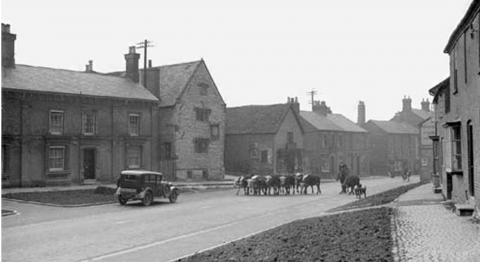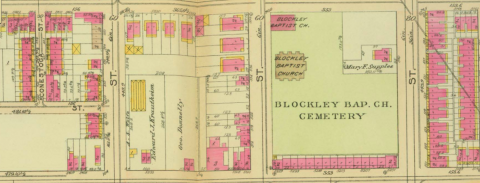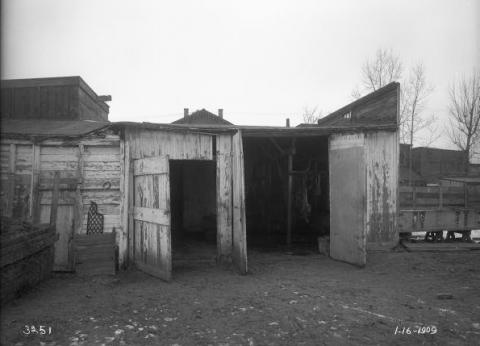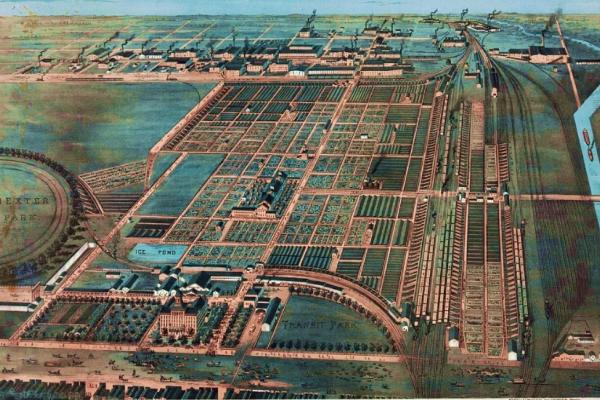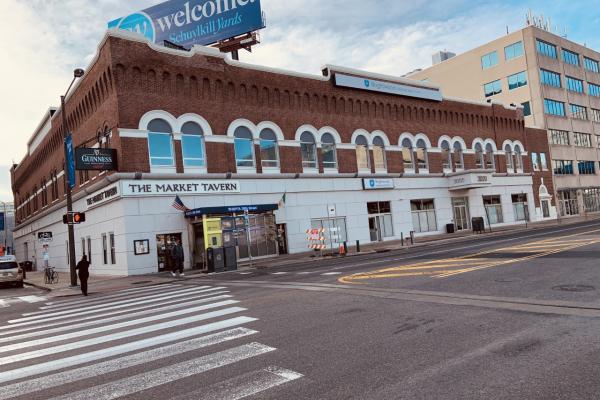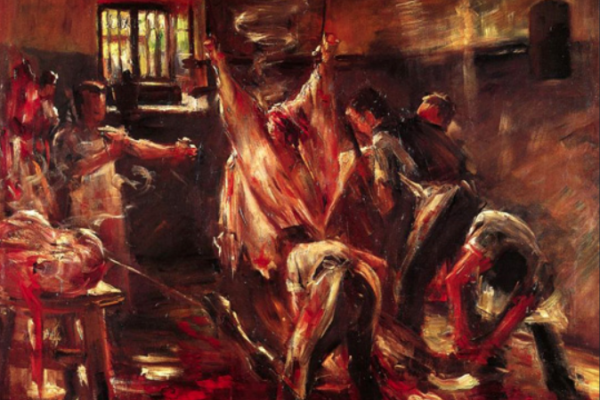Rogue Abattoirs: Slaughter the Philadelphia Way
At the turn of the twentieth century, Philadelphia’s rogue abattoirs posed a major public health problem as purveyors of beef infected with bovine tuberculosis.
In the first decade of the twentieth century, some 250 abattoirs were located at scattered sites across Philadelphia, operating “rogue” and defying the scrutiny of the City’s meat inspectors. These operations, which served up tainted meat to unwary consumers, were purveyors of bovine tuberculosis. One such operation for which photographs exist was at 5319 Westminster Ave.
The 1870 Philadelphia Business Directory lists a drove yard at Westminster and Belmont streets, in the immediate vicinity of Lancaster Avenue between 44th and 46th streets.1 The property owner, as shown on the 1872 H.W. Hopkins map (see Related Media), was Owen Jones. A drove yard was a cattle-collection center (drovers were cattle drivers) where local butchers and other buyers bid on cattle that were shipped by rail, collected at rail drop-off points, and herded along roads or streets (in West Philadelphia’s case, Lancaster Avenue) to the drove yard. The drove yard was not a slaughterhouse. This was “meat on the hoof.”2
Butchers operated their own abattoirs. In the absence of federal or state inspection laws, the quality of the processed meat was dependent on the butchers and their customers’ satisfaction. After centralized slaughterhouses, such as the Philadelphia Stockyards abattoir and D.M. Martin’s all-in-one abattoir (see the previous article in this collection) displaced the inefficient drove yards and the role of butchers as uninspected slaughterers in the late nineteenth century, and as meat inspection laws took hold, any drover or butcher operating on the old system was “rogue.”
Public health officials earmarked rogue abattoirs as breeding grounds for tuberculosis. “At the turn of the 20th century, tuberculosis still remained a leading cause of death in the United States,” writes the historian Ken Finkel. “Approximately 10 percent of the cases resulted from exposure to infected cattle or cattle products. More distressing was the fact that cattle caused 25 percent of the childhood cases of tuberculosis. More distressing still was the fact that these rates were even higher in cities.”3 Philadelphia was no exception.
Working with a “small and inadequate staff,” the City’s chief meat inspector, Albert Fricke Schreiber, a graduate of Penn’s Veterinary School, had the unenviable task of trying to regulate approximately 150 small abattoirs “spread far and wide.” “Schreiber and his inspectors visited nearly 44,000 butchers, slaughterhouses (also known as abattoirs), storage houses and markets in 1909,” writes Finkel. “He reported dropping in ‘quite unexpectedly, late at night, on two small downtown abattoirs,’ and finding ‘a tubercular beef carcass, from which the affected tissues had been carefully, if not deftly trimmed out’ and ‘being dressed for market.’ A good day’s work for the meat inspectors, but an unusually successful one.”4
Photographs made for Dr. Schreiber show a ramshackle abattoir at 5319 Westminster Ave., in West Philadelphia (see Related Media). The date is January 1909. The 1911 J.L. Smith map shows the block of the shuttered abattoir (see Related Media).
1. Philadelphia Business Directory, 1870, p. 219.
2. See Joshua Bevins, “When Cattle Men Reigned in the West,
Hidden City: Exploring Philadelphia’s Urban Landscape (History), 21 November 2016, https://hiddencityphila.org/2016/11/when-cattle-men-reigned-in-the-west/.
3. Ken Finkel, “Rogue Abattoirs and the Plight of Philly’s Meat Men,” PhillyHistory Blog, 8 December 2014, accessed from https://blog.phillyhistory.org/index.php/2014/12/rogue-abattoirs-and-the-plight-of-phillys-meat-men/, 10 September 2020.

